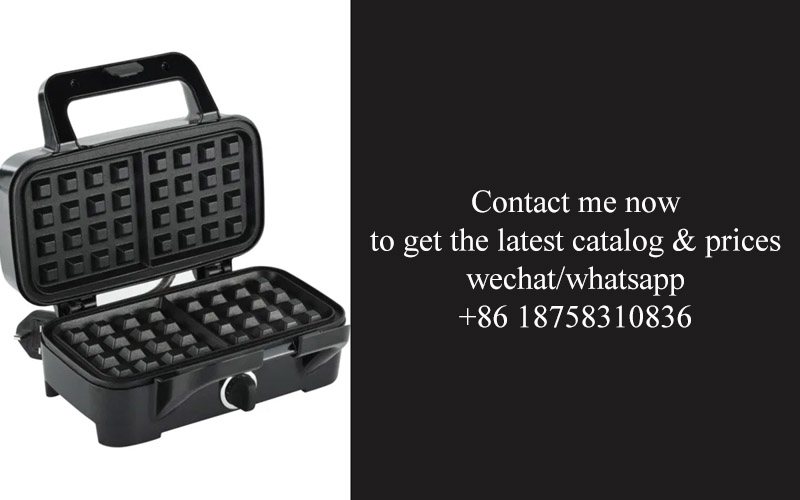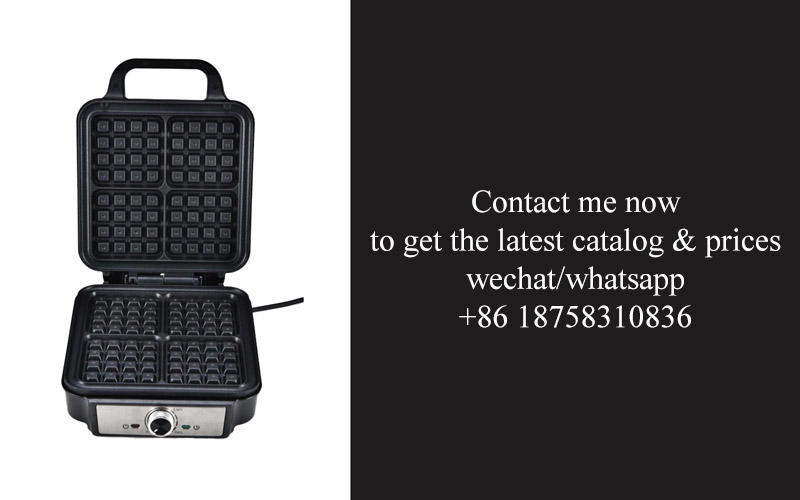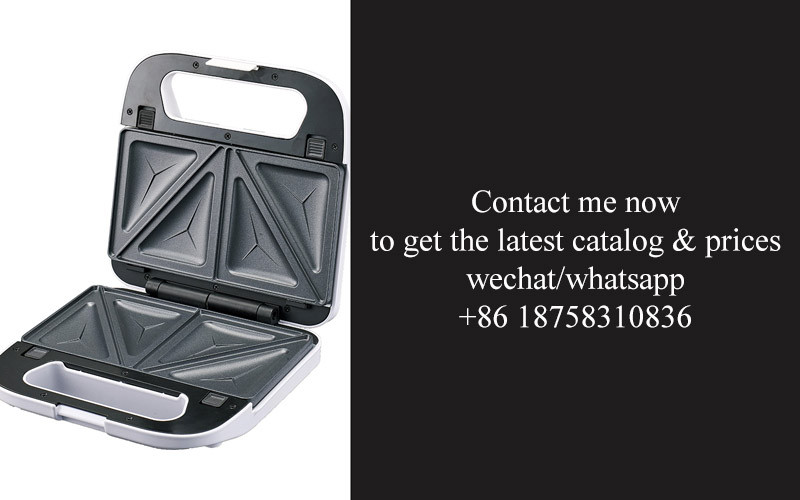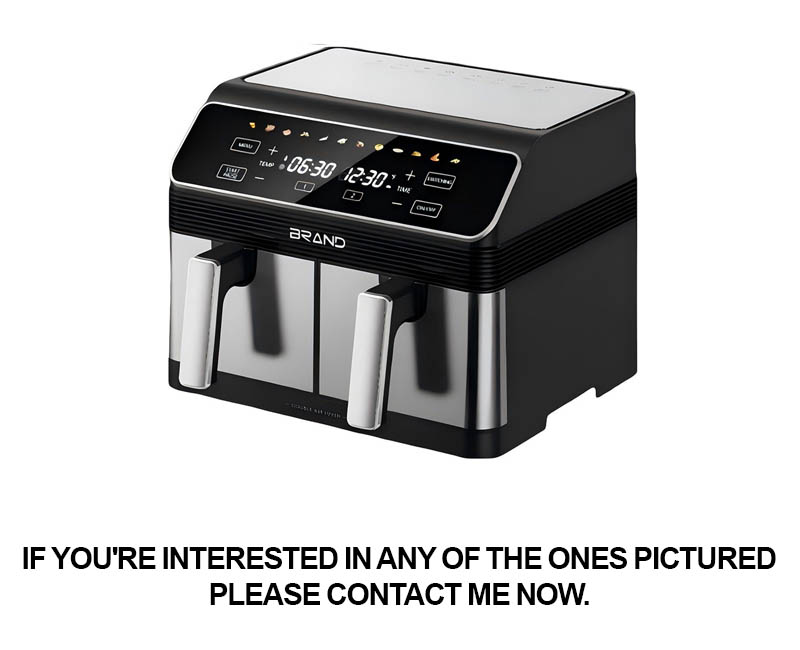Address
304 North Cardinal
St. Dorchester Center, MA 02124
Work Hours
Monday to Friday: 7AM - 7PM
Weekend: 10AM - 5PM
Address
304 North Cardinal
St. Dorchester Center, MA 02124
Work Hours
Monday to Friday: 7AM - 7PM
Weekend: 10AM - 5PM

As the kitchen transforms from a mere cooking space to a hub of innovation and convenience, the appliance market continues to evolve at a rapid pace. With consumers seeking smarter, more efficient, and eco-friendly solutions, the landscape of kitchen appliances is being reshaped. Today, we delve into the latest trends, the strategies suppliers are adopting to thrive in this dynamic market, and the innovative products that are poised to redefine what we expect from our kitchen appliances.
The European and American kitchen appliance industry has long been a beacon of innovation and design, offering consumers a vast array of high-tech and stylish solutions for their culinary needs. From the sleek, modern ranges and refrigerators to the state-of-the-art dishwashers and microwaves, these markets have set the standard for what is considered top-of-the-line in kitchen technology.
In Europe, the kitchen appliance sector is particularly diverse, with countries like Germany, Italy, and Sweden leading the way in terms of both quality and design. German manufacturers are renowned for their precision engineering, while Italian brands often blend traditional craftsmanship with contemporary aesthetics. Sweden, on the other hand, has a reputation for eco-friendly and user-friendly appliances that reflect the Scandinavian design ethos.
The United States has its own unique approach to kitchen appliances, with a strong focus on innovation and energy efficiency. American brands like KitchenAid, Whirlpool, and GE have been at the forefront of introducing new features and functionalities that cater to the evolving demands of homeowners. From smart appliances that can be controlled via smartphones to eco-friendly models that reduce energy consumption, the U.S. market is a hotbed for cutting-edge technology.
One of the most notable trends in both regions is the increasing integration of smart technology into kitchen appliances. Smart ovens, refrigerators with built-in cameras, and dishwashers that can be scheduled remotely are just a few examples of how technology is reshaping the kitchen landscape. This shift is not only making life more convenient for consumers but also opening up new opportunities for suppliers to offer unique and innovative solutions.
In Europe, the market is also seeing a growing interest in energy-efficient and sustainable appliances. As environmental concerns become more prevalent, consumers are looking for ways to reduce their carbon footprint without compromising on performance. This has led to a surge in demand for appliances that are not only energy-saving but also produced with sustainable materials and practices.
The American market, while similar in its pursuit of sustainability, also places a strong emphasis on functionality and user experience. The integration of voice-activated controls and intuitive interfaces has made kitchen appliances more accessible than ever before, appealing to a wide range of consumers, from tech-savvy millennials to the tech-averse baby boomers.
Despite the plethora of options available, the European and American kitchen appliance industry faces several challenges. One of the most significant is the increasing competition from emerging markets, where manufacturers are offering high-quality appliances at more affordable prices. This has led to a rise in import substitution programs, where local suppliers are encouraged to produce goods that were previously imported.
These import substitution programs are designed to bolster local economies, reduce trade deficits, and ensure that consumers have access to a diverse range of quality products. As a result, suppliers in Europe and America are investing in research and development to create products that not only meet the stringent quality standards of their domestic markets but also appeal to the global consumer.
Innovation is key in this competitive landscape. Companies that can offer unique features, superior performance, and a strong emphasis on sustainability will have a significant advantage. For example, appliances that are designed to reduce food waste, or those that incorporate smart features that can help homeowners save money on their utility bills, are likely to gain traction in the market.
Moreover, the rise of online shopping has transformed the way consumers purchase kitchen appliances. With more people turning to e-commerce for their purchases, suppliers must adapt by ensuring their products are readily available online and that their digital marketing strategies are effective in reaching the target audience.
In conclusion, the European and American kitchen appliance industry is a dynamic and ever-evolving sector. With the continued integration of smart technology, a growing focus on sustainability, and the challenge of import substitution, suppliers must stay agile and innovative to maintain their competitive edge. By focusing on quality, design, and customer satisfaction, these companies can continue to lead the way in kitchen appliance innovation.

The kitchen appliance industry in Europe and America has witnessed a significant shift in recent years, with a notable rise in import substitution. This trend, driven by a combination of economic, environmental, and technological factors, has reshaped the landscape of kitchen appliance manufacturing and supply chains.
Consumer demand for local products has been on the upswing, with a growing preference for appliances that are designed and produced domestically. This shift is not only about supporting local businesses but also about embracing the unique features and benefits that domestic products offer. From energy efficiency to customization, consumers are increasingly seeking appliances that align with their values and needs.
One of the key drivers behind this trend is the rising cost of imported appliances. As global trade policies fluctuate and shipping costs escalate, the overall cost of imported goods has become a more significant consideration for both retailers and consumers. In response, many European and American suppliers have started to focus on domestic production, which can be more cost-effective in the long run.
Additionally, environmental concerns are playing a pivotal role in the push for import substitution. Both regions are at the forefront of sustainability initiatives, and the kitchen appliance industry is no exception. Local manufacturers are more likely to comply with stringent environmental regulations, ensuring that their products are eco-friendly and have a lower carbon footprint. This aspect is becoming increasingly important to environmentally conscious consumers.
Technological advancements are another factor fueling the rise of import substitution. The European and American markets are known for their innovation, and local suppliers are often at the cutting edge of kitchen appliance technology. This allows them to create products that are not only efficient but also feature the latest smart features and design aesthetics. As a result, domestic appliances are becoming more appealing due to their advanced functionalities and cutting-edge designs.
The rise of import substitution has also brought about a renewed focus on supply chain resilience. In an era where global disruptions can quickly impact business operations, having a local supply chain is seen as a strategic advantage. Domestic suppliers can respond more quickly to market demands and reduce the risk of delays associated with international shipping and trade barriers.
On the production front, there’s a noticeable trend towards vertical integration. Local manufacturers are increasingly investing in the entire production process, from raw materials to assembly, which allows them to maintain better control over quality and cost. This approach also enables them to adapt quickly to changing market conditions and customer preferences.
Another important aspect is the rise of niche markets within the kitchen appliance sector. Local suppliers are capitalizing on the demand for specialized appliances, such as energy-saving refrigerators, induction cooktops, and smart kitchen systems. By focusing on these areas, they are able to offer unique solutions that cater to the specific needs of different consumer segments.
The importance of distribution channels cannot be overstated. Local suppliers are finding new ways to reach customers through a variety of retail formats, including brick-and-mortar stores, online marketplaces, and direct-to-consumer sales. This diversity in distribution helps to ensure that products are readily accessible to consumers, regardless of their location or purchasing preferences.
Despite the advantages of import substitution, there are challenges that need to be addressed. For instance, domestic manufacturers must compete with well-established global brands that have a strong presence in the market. They must also invest in marketing and brand building to differentiate their products and build trust with consumers.
Moreover, there’s a need for ongoing innovation to stay ahead of the curve. As consumer expectations evolve, suppliers must be ready to introduce new technologies and features that can keep them relevant. This requires a continuous investment in research and development, as well as a willingness to experiment with new approaches and materials.
In conclusion, the rise of import substitution in the European and American kitchen appliance industry is a multifaceted trend that reflects a broader shift towards local production, environmental consciousness, and technological innovation. By embracing these changes, suppliers are not only adapting to the current market dynamics but also laying the foundation for future growth and success.

In the dynamic world of kitchen appliances, understanding the supplier landscape is crucial for both manufacturers and consumers. The industry is marked by a diverse array of suppliers, each bringing their unique strengths and offerings to the table. Here’s a closer look at the various facets of this complex landscape.
The global supply chain for kitchen appliances is a tapestry woven with threads from all corners of the world. Major players in Asia, particularly China and South Korea, have long been the go-to suppliers for components and finished goods. However, the landscape is evolving, and new players are emerging, bringing fresh perspectives and technologies.
Chinese suppliers, known for their large-scale production capabilities, offer a wide range of appliances from budget-friendly models to premium lines. They’ve mastered the art of cost efficiency, which has made them a dominant force in the market. But they’re not just about quantity; Chinese suppliers are increasingly investing in research and development, aiming to innovate and improve their product lines.
On the other side of the Pacific, South Korean suppliers have a reputation for high-quality, durable appliances. Brands like Samsung and LG have become household names, and their products are sought after for their reliability. These suppliers have a strong focus on innovation, often leading the way in smart kitchen technology.
European suppliers, while traditionally smaller in scale, bring a unique design aesthetic and craftsmanship to the market. Countries like Germany, Italy, and Switzerland are known for their premium appliances that cater to a niche market of consumers who value luxury and quality over price. These suppliers often work closely with designers and engineers to create appliances that are not just functional but also a statement of style.
American suppliers, on the other hand, have a blend of both European design sensibilities and the practicality of Asian manufacturing. Brands like Whirlpool and KitchenAid have a strong presence, offering a mix of modern and traditional appliances that cater to a broad consumer base. They’ve also been quick to adapt to the trend of sustainability, offering energy-efficient models that are becoming increasingly popular.
The rise of import substitution is reshaping the supplier landscape. As local markets demand more localized products, suppliers are responding by setting up manufacturing facilities closer to their target markets. This trend is particularly evident in emerging economies where the cost of importing can be prohibitive. Local suppliers are stepping up to meet these demands, offering products that are tailored to local tastes and regulations.
Innovation is another driving force behind the changing supplier landscape. Suppliers are now more than just manufacturers; they are innovation partners. They collaborate with appliance brands to develop new technologies, materials, and design concepts that push the boundaries of what’s possible. This collaboration is often facilitated through partnerships and joint ventures, allowing suppliers to bring cutting-edge solutions to market more quickly.
The rise of e-commerce has also had a significant impact on the supplier landscape. Online marketplaces have opened up new channels for suppliers to reach customers directly, bypassing traditional retail intermediaries. This direct-to-consumer approach allows suppliers to offer competitive pricing and a wider range of products. It also means that customers can now access high-quality appliances from suppliers around the world, regardless of their geographical location.
The environmental impact of kitchen appliances is another factor shaping the supplier landscape. As sustainability becomes a more pressing concern, suppliers are under pressure to reduce their environmental footprint. This includes sourcing materials sustainably, reducing energy consumption during production, and designing appliances that are easier to recycle at the end of their life cycle.
In conclusion, the supplier landscape in the kitchen appliance industry is multifaceted and constantly evolving. From the rise of import substitution to the push for innovation and sustainability, suppliers are adapting to meet the changing demands of the market. Understanding these dynamics is key for anyone looking to navigate this complex and exciting industry.

In the ever-evolving kitchen appliance market, innovation is key to staying ahead of the curve. Here are some fresh and forward-thinking ideas that could reshape the way we think about kitchen appliances:
1. Smart Integration for Seamless Cooking ExperiencesImagine a kitchen where all your appliances communicate with each other. A refrigerator that suggests recipes based on the ingredients you have, an oven that automatically adjusts its settings for the dish you’re preparing, and a stovetop that can change heat levels with the touch of a button. This level of smart integration would not only streamline the cooking process but also provide a personalized culinary experience.
2. Eco-Friendly and Energy-Efficient AppliancesWith environmental concerns at the forefront, eco-friendly kitchen appliances are becoming increasingly popular. Designers are focusing on energy-efficient models that not only reduce utility bills but also have a smaller carbon footprint. Think of induction cooktops that use up to 90% less energy than traditional gas burners, or dishwashers that use a fraction of the water compared to older models.
3. Multi-Functional Appliances for Compact SpacesIn urban settings and smaller homes, space is at a premium. Appliances that serve multiple purposes can be a game-changer. For instance, a countertop unit that combines a microwave, an air fryer, and a convection oven could save valuable counter space. Similarly, a compact refrigerator with a built-in wine cooler could cater to the needs of a small household or a dedicated wine enthusiast.
4. Personalized Cooking with AI-Powered AppliancesArtificial Intelligence (AI) is already making waves in various industries, and the kitchen appliance market is no exception. Appliances that learn from your cooking habits and preferences could tailor their settings to your taste. An AI oven, for example, could analyze the way you cook and suggest improvements, such as temperature adjustments or cooking times, to enhance your culinary outcomes.
5. Interactive and Educational AppliancesCooking is not just a daily chore; it’s an art and a skill. Appliances that provide interactive cooking lessons could be a hit. Imagine a countertop unit that displays cooking tutorials on its screen, guides you through the process with real-time feedback, and even adjusts its settings to help you master a new recipe. This could be particularly appealing to beginners or those looking to expand their culinary repertoire.
6. Smart Storage Solutions for the Fridge and PantryModern kitchens are not just about cooking; they’re about storage too. Smart refrigerators that can track the expiration dates of your groceries, suggest recipes based on what you have, and even order supplies when you’re running low are becoming more common. The same goes for smart pantries that can store and organize your dry goods, ensuring you always have the ingredients you need at hand.
7. Health and Wellness-Oriented AppliancesAs health consciousness grows, kitchen appliances are being designed with wellness in mind. For example, a countertop juicer that not only extracts juice but also purifies it, or an air fryer that uses less oil than traditional frying methods, promoting healthier cooking habits.
8. Customizable and Modular Kitchen AppliancesThe kitchen is a place where personal style and practicality meet. Appliances that allow for customization, such as cooktops with interchangeable burners in different shapes and sizes, or refrigerators with modular shelves that can be adjusted to fit various food containers, offer a level of personalization that caters to individual needs and preferences.
9. Appliances with Advanced Cleaning TechnologiesCleaning up after cooking can be time-consuming. Appliances with advanced cleaning technologies, such as self-cleaning ovens, dishwashers with sanitizing cycles, or even cookware that can be cleaned with minimal effort, would be a welcome addition to any kitchen.
10. Sustainable and Recyclable MaterialsFinally, the use of sustainable and recyclable materials in the production of kitchen appliances is gaining traction. From stainless steel and aluminum to recycled plastics and bio-based materials, the market is responding to consumer demands for more environmentally responsible products. Appliances that are not only innovative but also eco-friendly are likely to have a significant market appeal.

In the ever-evolving landscape of kitchen appliances, staying ahead of the curve is crucial for both manufacturers and consumers. Here’s a glimpse into the latest trends that are shaping the industry:
Smart IntegrationThe integration of smart technology into kitchen appliances is no longer a novelty; it’s a necessity. From refrigerators that can order groceries to ovens that can sync with your phone, the smart kitchen is becoming increasingly interconnected. These appliances not only enhance convenience but also offer energy efficiency and personalized settings.
Energy EfficiencyWith climate change and rising energy costs, energy efficiency has become a major focus. Appliances are now being designed with cutting-edge technologies to consume less power while maintaining their functionality. Features like LED lighting, programmable settings, and energy-saving modes are becoming standard, appealing to environmentally conscious consumers.
Health and WellnessThe kitchen is no longer just a place for cooking; it’s a hub for health and wellness. Appliances that promote healthier eating habits are on the rise. This includes everything from air fryers that reduce oil usage to countertop juicers that make fresh, healthy juices at home. The emphasis on health has also led to the development of kitchen appliances that can monitor and report nutritional information.
Customization and PersonalizationConsumers today are looking for products that cater to their unique preferences and needs. The kitchen appliance market is responding with customizable options, from color choices to specific features. Smart appliances can even be tailored to individual cooking styles and preferences, offering a more personalized kitchen experience.
SustainabilitySustainability is a growing concern, and the kitchen appliance industry is taking notice. From biodegradable packaging to appliances made with recycled materials, sustainability is becoming a key factor in consumer choices. Eco-friendly designs not only reduce the environmental impact but also resonate with environmentally conscious shoppers.
Design and AestheticsThe kitchen is a space where aesthetics play a significant role. Modern kitchen appliances are not just functional but also stylish. Sleek designs, minimalist lines, and integrated appliances that blend seamlessly into kitchen cabinets are becoming more popular. The emphasis on design is not just about looks; it’s about creating a cohesive and visually appealing kitchen environment.
Cooking Technology InnovationsInnovations in cooking technology are pushing the boundaries of what’s possible in the kitchen. From induction cooktops that provide faster and more precise heat control to multi-functional ovens that can roast, bake, and steam simultaneously, these advancements are changing the way we cook. The industry is also exploring new materials and methods that can enhance the cooking experience and food quality.
Food Storage and PreservationThe way we store and preserve food is also evolving. New appliances like sous-vide machines and vacuum sealers are becoming more accessible, allowing for better food preservation and flavor retention. These tools are particularly popular among home chefs and those looking to minimize food waste.
Interactive and Educational FeaturesInteractive features are becoming more common in kitchen appliances, offering educational content and interactive cooking guides. Smart cookers and ovens can now provide step-by-step cooking instructions, nutritional information, and even cooking tips, making it easier for novices to master their culinary skills.
Subscription-Based ServicesThe kitchen appliance market is also exploring subscription-based services that offer regular updates and maintenance. This model can provide customers with the latest technology without the need for a complete appliance replacement, aligning with the trend towards leasing and subscription services in other consumer electronics sectors.
In conclusion, the kitchen appliance market is experiencing a transformation driven by technology, sustainability, and consumer preferences. As these trends continue to shape the industry, it’s clear that the future of kitchen appliances will be characterized by smart, efficient, and personalized products that enhance the overall cooking experience.

In the world of kitchen appliances, data-driven insights are reshaping the way we look at innovation and market trends. Here, we delve into some key findings and real-world examples that highlight the power of data in driving the appliance industry forward.
Understanding Consumer Behavior Through AnalyticsConsumer analytics have become a cornerstone in the kitchen appliance market. By analyzing purchase patterns, usage habits, and customer feedback, suppliers can tailor their products to meet evolving needs. For instance, smart appliance manufacturers have noticed a surge in interest for energy-efficient models, leading to a rise in appliances with eco-friendly features.
Predictive Maintenance and IoT IntegrationThe Internet of Things (IoT) has revolutionized the way appliances are designed and maintained. Case in point, refrigerator suppliers now integrate sensors that can predict when a part is about to fail, allowing for proactive repairs and maintenance. This not only extends the lifespan of the appliance but also reduces downtime and the inconvenience of unexpected breakdowns.
Smart Connectivity and User ExperienceIn the era of smart devices, the user experience has become paramount. Suppliers are now focusing on creating intuitive interfaces that make appliance operation as seamless as possible. This shift is evident in the adoption of voice-controlled kitchen appliances, which are becoming increasingly popular due to their ease of use and hands-free operation.
E-commerce and Online MarketplacesThe rise of e-commerce has changed the landscape for appliance suppliers. Online marketplaces provide valuable data on consumer preferences, allowing suppliers to adjust their product offerings accordingly. For example, popular online platforms have revealed a growing demand for smaller, compact kitchen appliances suitable for smaller living spaces or limited counter space.
Energy Efficiency Regulations and CertificationsGovernments around the world are implementing stricter energy efficiency regulations, which directly impact the appliance industry. Suppliers are responding by developing products that meet or exceed these standards, often leading to the introduction of new certifications and labels that inform consumers about a product’s energy efficiency.
Sustainability and Green InitiativesSustainability is no longer just a buzzword; it’s a driving force in the appliance industry. Suppliers are investing in research and development to create appliances that are environmentally friendly throughout their lifecycle. From recyclable materials to energy-efficient manufacturing processes, data is guiding these green initiatives.
Health and Safety FeaturesConsumer concerns about health and safety have led to a proliferation of new features in kitchen appliances. For example, air fryers have become a favorite for their ability to cook with minimal oil, while some ovens now come with features that detect the presence of smoke and automatically shut off to prevent fires.
Innovation in Appliance DesignThe appliance industry is seeing a surge in innovative design, with suppliers constantly pushing the boundaries of what’s possible. This includes sleeker, more compact appliances that are as aesthetically pleasing as they are functional. The use of materials like stainless steel and glass, which are both durable and easy to clean, is becoming more prevalent.
Customization and PersonalizationCustomization has become a key differentiator for appliance suppliers. By leveraging data, companies are offering consumers the ability to personalize their appliances, from color options to specific features. This approach not only caters to individual tastes but also encourages brand loyalty.
Case Study: The Smart OvenA notable case study is the introduction of the smart oven. By collecting data on cooking times, temperatures, and preferences, this oven can learn and adjust to the user’s cooking habits. This not only saves energy but also improves the cooking experience by reducing the number of burnt or overcooked dishes.
Data Security and Privacy ConcernsWith the integration of smart technology, data security and privacy have become significant concerns. Suppliers must ensure that the collection and use of data are transparent and that customer information is protected. This is especially important given the regulatory environment and the growing number of cyber threats.
In conclusion, the appliance industry is undergoing a transformative phase, driven by data-driven insights. From predictive maintenance to sustainability initiatives, suppliers are leveraging data to create smarter, more efficient, and personalized kitchen appliances. The future of the market is clearly shaped by the ability to interpret and act upon data effectively.

In the evolving landscape of kitchen appliance markets, suppliers are increasingly looking for ways to capitalize on import substitution trends. This shift, driven by factors such as economic changes, technological advancements, and consumer preferences, presents both challenges and opportunities. Here are some strategies suppliers can adopt to leverage this trend effectively:
Adapting to Local Market NeedsSuppliers must focus on understanding the unique demands of the local market. This involves analyzing consumer behavior, cultural preferences, and regional cooking styles. By aligning their product offerings with these specific needs, suppliers can ensure that their appliances resonate with customers.
Investing in Research and DevelopmentTo stand out in the import substitution market, suppliers need to invest in research and development. This includes creating innovative features that cater to local tastes and solving common problems faced by consumers. For instance, energy efficiency, ease of use, and durability are key factors that can differentiate a product in a competitive market.
Building Strong Distributor NetworksEstablishing strong relationships with local distributors is crucial. Distributors can provide valuable insights into market trends and consumer preferences. They also play a pivotal role in ensuring that products reach the end consumer effectively. Suppliers should prioritize building trust and collaboration with these partners.
Embracing Sustainable and Eco-Friendly PracticesAs environmental concerns grow, suppliers can gain a competitive edge by emphasizing sustainability. This could involve manufacturing appliances with recyclable materials, offering energy-efficient models, or producing appliances that minimize waste during their lifecycle.
Leveraging Local Manufacturing CapabilitiesOne of the primary advantages of import substitution is the ability to leverage local manufacturing capabilities. Suppliers should explore opportunities to set up or expand their manufacturing facilities within the target market. This not only reduces transportation costs and lead times but also supports local economies.
Marketing and BrandingEffective marketing and branding are essential to capture the attention of consumers. Suppliers should develop strategies that highlight the local origin of their products and the unique benefits they offer. Storytelling, showcasing local craftsmanship, and leveraging social media can be powerful tools in this regard.
Collaborating with Local Designers and EngineersInvolving local designers and engineers in the product development process can lead to appliances that are not only functional but also culturally relevant. These professionals can provide insights into local aesthetic preferences and design trends, ensuring that products are more likely to resonate with consumers.
Offering Comprehensive After-Sales SupportA robust after-sales support system is crucial for customer satisfaction and repeat business. Suppliers should invest in training local service technicians, setting up service centers, and ensuring easy access to replacement parts. This can help build a loyal customer base and foster positive word-of-mouth.
Pricing StrategiesCompetitive pricing is a key factor in the import substitution market. Suppliers need to carefully consider their cost structures and find ways to offer competitive prices without compromising on quality. This might involve optimizing supply chains, negotiating with suppliers, or finding cost-effective production methods.
Incorporating Smart TechnologyIntegrating smart technology into kitchen appliances can open up new markets and attract tech-savvy consumers. Suppliers should explore opportunities to offer appliances that can be controlled remotely, provide data analytics, or connect with other smart home devices.
Monitoring Market DynamicsStaying informed about market dynamics is crucial. Suppliers should monitor changes in consumer preferences, regulatory environments, and competitor strategies. This allows them to adapt quickly to market shifts and maintain a competitive edge.
By adopting these strategies, suppliers can effectively capitalize on the import substitution trend in the kitchen appliance market. It’s a dynamic and evolving landscape, but with the right approach, suppliers can find success in meeting the growing demand for locally produced, high-quality appliances.

The kitchen appliance industry is on the cusp of a transformative era, with innovations and market shifts reshaping the landscape. As suppliers navigate this dynamic environment, understanding the nuances of the market is crucial. Here’s a look at how embracing the future of kitchen appliances can lead to strategic success.
In the realm of kitchen appliances, the integration of smart technology has become a cornerstone. Suppliers must focus on creating products that not only enhance efficiency but also offer connectivity, allowing consumers to manage their appliances remotely through smartphones or smart home systems.
Customization is another key trend. Tailoring appliances to meet the specific needs and preferences of diverse consumer groups is becoming more prevalent. This means suppliers need to consider factors like energy efficiency, user-friendliness, and the ability to integrate with various kitchen layouts and styles.
Sustainability is not just a buzzword; it’s a driving force in the kitchen appliance market. Suppliers who prioritize eco-friendly designs and materials are not only appealing to environmentally conscious consumers but are also positioning themselves as leaders in the industry. This could involve using recycled materials, designing appliances with a longer lifespan, or offering energy-saving features.
The rise of health and wellness has also influenced the kitchen appliance market. Consumers are increasingly interested in appliances that can contribute to a healthier lifestyle, such as air purifiers for cooking areas, water filters, and appliances that promote healthier cooking methods, like air fryers and steam ovens.
The importance of user interface and experience cannot be overstated. Appliances that are intuitive and easy to use are more likely to be adopted by consumers. Suppliers should invest in designing interfaces that are not only aesthetically pleasing but also functional, ensuring a seamless experience for the user.
Collaboration with chefs and culinary experts is becoming a trend. By understanding the needs of professional kitchens, suppliers can develop appliances that are not just suitable for home use but also have the potential to be used in commercial settings. This can open up new markets and opportunities for suppliers.
Globalization has its challenges, but it also presents opportunities. Suppliers should consider expanding their reach beyond domestic markets to tap into the global demand for innovative kitchen appliances. This might involve adapting products to local regulations, cultural preferences, and energy standards.
The rise of online shopping has changed the way consumers purchase kitchen appliances. Suppliers need to ensure their products are easily accessible online, with detailed information and customer reviews that can influence purchasing decisions. E-commerce platforms have become a crucial channel for reaching consumers.
As the industry evolves, the role of data analytics becomes more significant. Suppliers can use data to understand consumer behavior, predict trends, and refine their product offerings. By leveraging big data, suppliers can gain insights into market demands and tailor their strategies accordingly.
Case studies of successful suppliers who have embraced these trends often highlight the importance of continuous innovation. For instance, a supplier that introduced a line of smart kitchen appliances saw a significant increase in sales due to their cutting-edge technology and user-friendly designs.
Another case study involves a supplier that focused on sustainability by using recycled materials in their appliances. This not only appealed to eco-conscious consumers but also resulted in cost savings for the company, as they could source materials more affordably.
Suppliers who are able to adapt to the rapidly changing landscape of the kitchen appliance market by focusing on smart technology, customization, sustainability, health and wellness, user experience, collaboration, globalization, e-commerce, data analytics, and continuous innovation are likely to thrive.
In conclusion, the future of kitchen appliances is bright for those who are willing to embrace change and invest in the right strategies. By staying ahead of the curve and understanding the needs of the modern consumer, suppliers can position themselves as leaders in an industry that is constantly evolving.